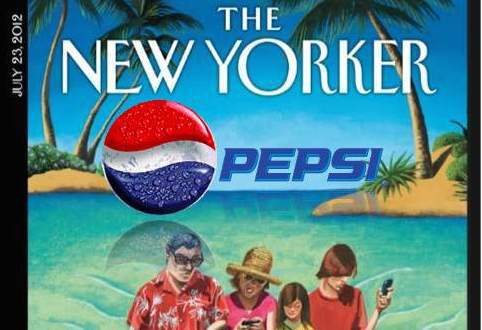Conde Nast Proudly Using Editors To Write Sponsored Content For Advertisers
 For quite some time, we’ve been telling you about a particularly pernicious evil that goes by various names — advertorial content, native advertising, brand reporting, branded content, sponsored stories, pure crap — that a growing number of websites have tried to slip past their readers as actual editorial content. The most ethical sites take measures to call these stories out as being bought and paid for, and many sites refuse to taint their editorial process by allowing their staffers to work on this nonsense. But Conde Nast has decided that the best way to use its highly qualified and talented staff is to have them writing shill content for advertisers.
For quite some time, we’ve been telling you about a particularly pernicious evil that goes by various names — advertorial content, native advertising, brand reporting, branded content, sponsored stories, pure crap — that a growing number of websites have tried to slip past their readers as actual editorial content. The most ethical sites take measures to call these stories out as being bought and paid for, and many sites refuse to taint their editorial process by allowing their staffers to work on this nonsense. But Conde Nast has decided that the best way to use its highly qualified and talented staff is to have them writing shill content for advertisers.
The publisher of Vogue, GQ, Glamour, Golf Digest, Brides, Vanity Fair, The New Yorker, and numerous other high-profile magazines announced that it has created something called Studio 23, a new “branded content studio… which brings together the company’s content expertise, creative talent, distribution network and first-person data for advertisers and marketers.”
So the next time you’re looking at a Conde Nast publication’s website and see some story brought to you by Estee Lauder or Titleist or Travelocity, you’ll at least know that this unadulterated bilge was written by someone who has reached the top of the magazine publishing world.
“We are changing the branded content game with 23 Stories by Condé Nast by offering marketers, for the first time, access to our unparalleled editorial assets,” said the company’s Chief Marketing Officer, who we can only assume lives with himself by doing penance nightly, donning a hairshirt — a really stylish one, but a hairshirt nonetheless. “As clients seek to elevate their storytelling and define themselves as publishers, we believe Condé Nast is uniquely qualified to partner with them to deliver compelling content, targeted to the right audiences at scale.”
Here’s the myth that Conde and other supporters of this crap would have you believe — that it’s a way to bring you more quality content that you want. That implies that these are stories that, say Conde Nast Traveller, wants to do, but just doesn’t have the resources. That’s like assuming that your local baseball television team couldn’t give you the game’s starting lineup if it wasn’t sponsored by some bank.
These are not long-term investigative or research projects that would have been funded by grants or even by interested parties. This is just advertising in the form of an article.
Improving branded content, is just about providing advertisers with content that is less embarrassingly detached from what readers are seeking out. But shouldn’t that be the job of the advertiser to figure out its market and tailor its message appropriately, as opposed to paying experienced journalists to try to slip this lupine content in by dressing it in ovine outfits.
Conde claims that sponsored crud will be labeled as such, but as we’ve seen from other publications, there is no standard for how to appropriately call out branded content. Some think a mere byline mention of the sponsoring company is adequate, while others wrap the content in advertising, which may just confuse the matter. Some go so far as to include “Sponsored” or some other term in the headline so that even when it’s shared on Facebook or Twitter there is no mistaking it for actual editorial content.
Want more consumer news? Visit our parent organization, Consumer Reports, for the latest on scams, recalls, and other consumer issues.

